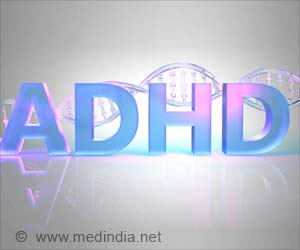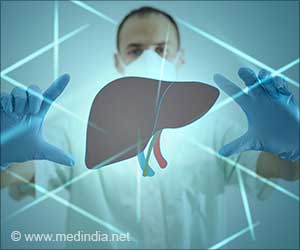Role of oxidative stress in Alzheimer’s disease helps explore potential therapeutic targets.

Does Managing Oxidative Stress Hold the Key to Effectively Treating Alzheimer's Disease
Go to source). AD is the most common type of dementia and involves areas of the brain that control thought, memory, and language.
‘Did You Know?
By 2050, the number of people living with Alzheimer's disease is expected to triple if no breakthrough treatments are found. #alzheimersdisease #oxidativestress’





It is the most common cause of disability in individuals over 65 years of age and is one of the top 10 leading causes of death in the United States. By 2050, the number of people living with Alzheimer's disease is expected to triple if no breakthrough treatments are found. #alzheimersdisease #oxidativestress’
AD is characterized by the abnormal deposition of amyloid beta peptide and intracellular accumulation of neurofibrillary tangles of hyperphosphorylated tau protein. The diagnosis of AD has recently improved, but its exact cause has not yet been identified.
The major challenges are to look beyond the two dominant hypotheses, amyloid-beta deposition, and tau phosphorylation.
There may be other factors responsible for triggering the disease. Are they triggered by OS, a process referring to an imbalance between antioxidants and oxidants?
The OS hypothesis suggests that the brain remains multifunctional as long as “free radicals” produced during various biochemical reactions in the brain are neutralized by antioxidants.
Advertisement
Neuroprotection: Hope on the Horizon
Guest Editor of the supplement Pravat K. Mandal, PhD, Scientist and former Director-in-Charge of the National Brain Research Center, Gurgaon, India, and Honorary Professor, Florey Institute of Neuroscience and Mental Health, Melbourne, Australia, explains: “The OS hypothesis was initiated more than quarter century ago. Recently researchers have shown renewed interest in investigating the potential benefits of OS neutralization, which has led to the design of numerous trials to examine its effects. As long as there is a balance between the pro-oxidative molecules and antioxidants to neutralize radicals, the brain remains multifunctional and healthy. While there are several of these antioxidants, a prominent one receiving significant attention is glutathione (GSH).”Analysis based on clinical studies indicates that significant brain GSH depletion in the hippocampus initiates the early onset of AD before amyloid-beta deposition and tau phosphorylation, which is now validated by a transgenic animal model study.
- Reduced risk of developing AD is associated with dietary intake of antioxidant supplements.
- Supplementation with GSH, made from the amino acids glycine, cysteine, and glutamic acid, may be neuroprotective and reduce amyloid beta or tau phosphorylation.
- Significant improvement of working memory in animal models with induced dementia due to Marrubium vulgare extract suggests that it may impact memory preservation.
- Maintaining diversity in drug development for AD research is important for enhancing the flow of information from randomized clinical trials.
Insights from Oxidative Stress
One contribution explores the neuroprotective effect of combined treatment with epigallocatechin 3-gallate (EGCG) and melatonin (MT) on familial AD.Investigators analyzed the therapeutic potential of a combination of EGCG and MT in a three-dimensional in vitro model of rare familial AD with a mutation in the presenilin-1 gene.
The combination of EGCG and MT treatment effectively reduced these pathological markers more efficiently than individual treatments.
Co-lead investigators Marlene Jimenez-Del-Rio, PhD, and Carlos Velez-Pardo, DrSci, both from the Neuroscience Research Group, Medical Research Institute, Faculty of Medicine, University of Antioquia, SIU, Medellin, Colombia, report, “Treatment with a combination of EGCG and MT can be of high therapeutic value due to the high antioxidant capacity and anti-amyloidogenic effect of both compounds compared to individual treatments and deserves further investigation.”
Dr. Mandal adds: “Combined therapy of EGCG and MT holds a therapeutic promise for familial AD due to inherent antioxidant capability.”
Other important topics covered in this issue include:
- Molecular aspects of aging and age-related disorders
- Potential therapeutic effects of long-term administration of Tocovid, a novel vitamin E mixture
- Protective effects of coenzyme Q10 and high-intensity interval training, both individually and in combination
- Efficacy of docosapentaenoic acid and/or eicosapentaenoic acid supplements in patients with mild cognitive impairment
- Protective functions of the thioredoxin system and nicotinamide adenine dinucleotide phosphate in the context of AD-induced damage
- Potential strategies to address early events in AD involving microvascular deterioration in the hippocampus that precedes Aβ deposition
- Antioxidative and anti-neuroinflammatory effects of Centella asiatica and its triterpene fractions on lipopolysaccharide-induced microglial cells for AD management
- A computational system pharmacology workflow to uncover the OS triggering AD as well as the potential therapeutic targets and neuroprotective drugs
“The discovery of OS as upstream to amyloid beta and tau deposition places it at the crossroads of effective therapeutic intervention. Dr. Mandal’s issue explores the state of the science and inspires further development,” adds George Perry, PhD, Semmes Foundation Distinguished University Chair in Neurobiology, The University of Texas at San Antonio, and Editor-in-Chief of JAD.
Reference:
- Does Managing Oxidative Stress Hold the Key to Effectively Treating Alzheimer’s Disease - (https://www.j-alz.com/content/does-managing-oxidative-stress-hold-key-effectively-treating-alzheimers-disease)
Source-Eurekalert















